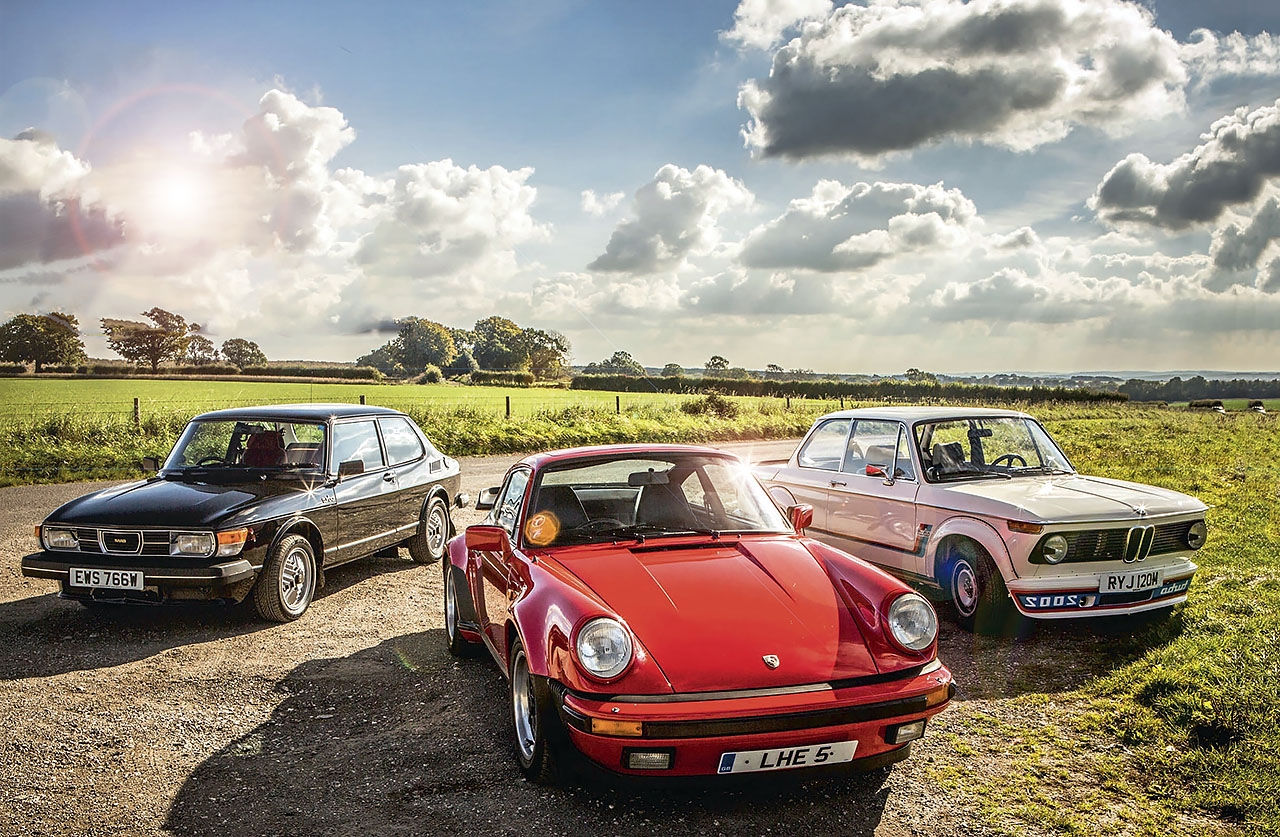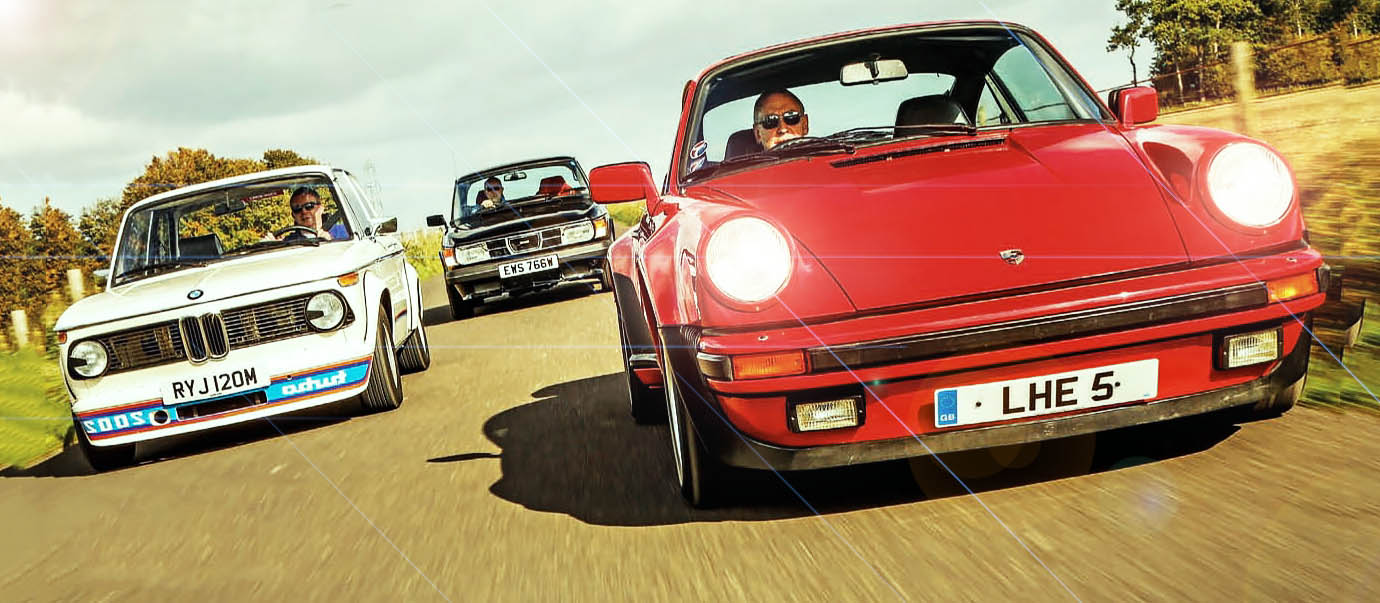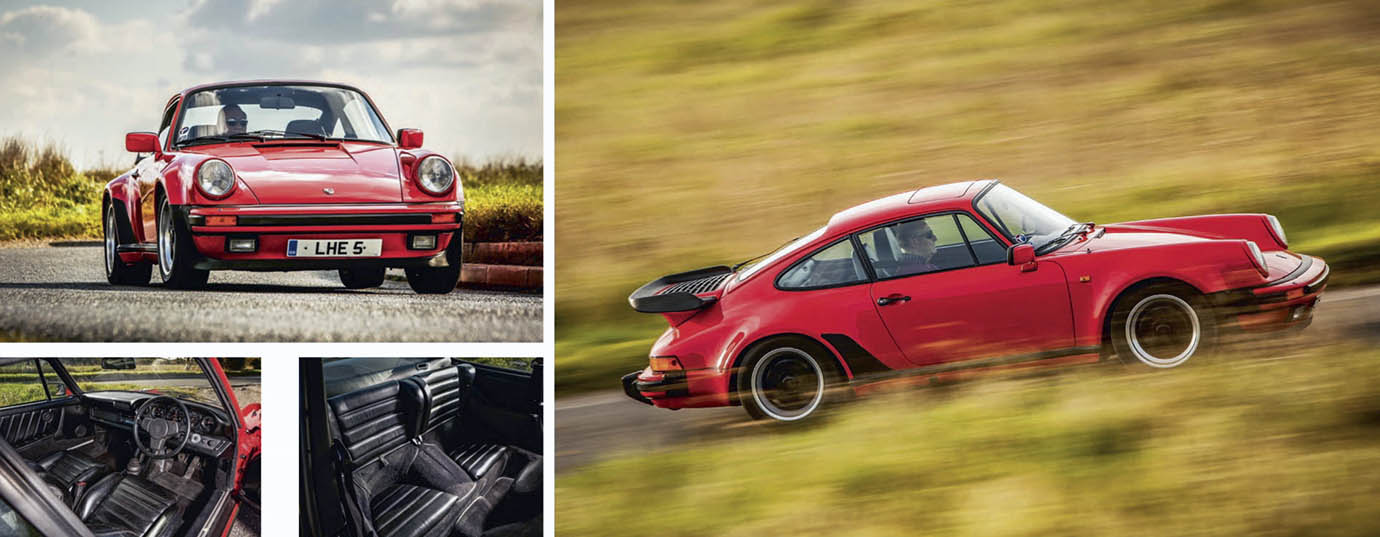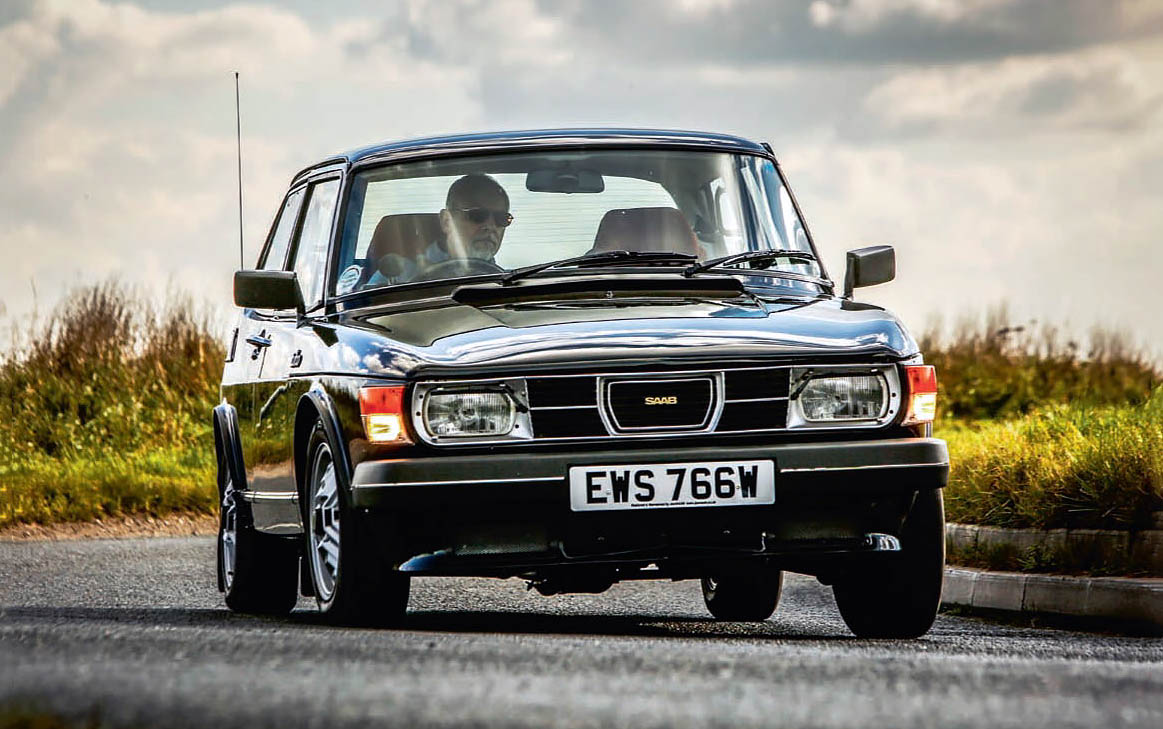
Turbo Pioneers. Practical performance or untamed power? BMW 2002 Turbo vs. SAAB 99 Turbo and Porsche 911 Turbo 930. Turbo terrifics Gamechangers from Saab, BMW and Porsche that gave forced induction to the masses in every market. This pioneering trio brought the fledgling turbo into the mainstream. Simon Charlesworth braves the Saab 99, Porsche 911 and BMW 2002. Photography Tony Baker.
Today, the turbo is all grown up. It has been rehabilitated and domesticated, exorcised of the wild ways of its youth. No longer is it just a crudely effective mechanical means with which to conjure mega-horsepower bragging rights. Swiss engineer Alfred Büchi’s ‘spinning top’ is now a mild-mannered device that assists in ticking all of the right eco-efficient boxes.
Even in Formula One, the turbo is there to assist the hybrid powerplant rather than offer seemingly unlimited power for a short period of time before expiring in a cloud of smoke – as was the case with the more extreme 1980s incarnations.
The European trio that you see here, however, represents the pioneering generation of turbocharging. Sired by motorsport, or at the very least conceived with it in mind, these now-classic roadgoing machines have a considerably different image. These were renowned in their day for being quick-tempered beasts with a sadistic predilection for spitting unwary drivers off the road in a frenzy of fishtailing and tyre smoke. Cars to approach with caution and a degree of awe.

So, as the shortest straw is drawn and the office brown trousers are issued, will this reputation prove to be deserved? Or have the Porsche 911, Saab 99 and BMW 2002 all been misrepresented, their image unfairly tarnished by decades of Chinese whispers? Let’s find out…
BMW 2002 turbo
Approach the BMW 2002 turbo from head-on, and you will experience a definite unease. The car brings to mind an ice-hockey player in full battledress who’s intent on breaking bones. Those headlamps stare coldly right through you with an intimidating ‘did you spill my pint?’ malevolence. You can see why owner Stuart Lawson affectionately refers to his 1974 model as a “hooligan”.

The turbo’s origins lie in the 280bhp 2002TIK – ‘K’ for kompressor – with which Dieter Quester had won the Group 5 division of the 1969 European Touring Car Championship. The German driver had taken the 1968 title in his 2002ti so running an Eberspacher turbocharger, even if it was comparatively new to the motor industry, was viewed as an effective way of retaining his 2-litre title.
Although 1970’s new ETCC regulations stipulated that non-homologated turbocharged cars be excluded – forcing the 290bhp 2002TIK up into Group 7, where it was not competitive – Quester’s car did inspire BMW’s Alex von Falkenhausen to develop a road-going version. After three years of development, the 2002 turbo was launched at the 1973 Frankfurt International Motor Show. Not only would it further enhance BMW’s image – as a performance marque adept at dancing along technology’s cutting edge – but its production run would also homologate the 2002 turbo engine.
Alas, reality did not read the plan. No sooner had the press cars taken to the road – each one bearing that famous reverse-legend spoiler graphic – than West German politics intervened. The decal, it was claimed, would encourage fast and aggressive driving. BMW listened, sort of, and although dealers would supply the stickers, they were not permitted to apply them.
Motorsport regulations changed (banning turbos) and the BMW was launched just in time to get a front-row seat for the 1973 Oil Crisis. A situation that made the price of a barrel of oil quadruple also made it hard to sell pricey performance cars with a 21mpg thirst – and it made the socks ’n’ sandals brigade even more unhappy. Instead of 2000 turbos being built, in total just 1672 rolled out of the Munich factory.
Away from the pong of politics and circuit racing, the turbo lifted the 2002 out of its familiar market territory – where the tii locked horns with RS2000s, 2000 GTVs and Dolly Sprints – and put it bang into the stomping ground of the Porsche 911. Spooling out 170bhp at 5800rpm with 171lb ft at 4000rpm, the £4221 BMW could scorch to a maximum speed of 130mph, knocking 0-60mph on the head in a mere 7.3 seconds. That made it faster than a 911 and more expensive than a Jaguar E-type V12.

Clockwise, from top: red surround on instrument panel brightens up the 2002’s sombre interior; badging and bodykit hint at performance; iconic BMW Motorsport stripes; hot 170bhp ‘four’ is a gem.
Such welly did not come without criticism, as Autocar remarked: ‘The only further point that might be made in the context of handling concerns the effects of the peakiness of the power output. Effectively, this means that as one is accelerating through a long corner, one is getting a steadily increasing amount of power, tending to tighten the line more and more…’
Two optional extras make Stuart Lawson’s ex-Italian-market example a different animal from that tested by Autocar, however. While you could pedantically discuss the effect the FPS ‘bottle-top’ alloys have on the BMW’s handling characteristics, its unusual five-speed manual ’box tames its wicked ways. The closer, more numerous ratios ensure a less spiky output delivery, helping to calm the turbo’s crazy horses at full gallop.
Providing, that is, your right hand can come to terms with the transmission’s dogleg pattern and rather gristly change quality. “Once you’ve got second,” advises Lawson, “the gearbox is easy. I don’t think they’re hard to drive. If you read the early reports on them, they sound like a nightmare – they’re not. Although they can be in the wet…” A cursory glance at the bright babyblue sky is followed by a sigh of relief.
The cabin is pure 1973 2002, but with a dashtop boost gauge, a very red surround to the VDO instruments and compulsory left-handdrive (the KKK turbo installation caused the quicker-ratio ZF-Gemmer steering box to overheat in correct-hand-drive prototypes, although two were built). Advised that “second gear is rarely bothered” and “you can do anything between 1000 and 8000rpm”, the 6500rpm redline is noted and the throttle squeezed. At 3000rpm, boost builds and by 4000rpm you’re left in no doubt – the turbo whistles away like a good ’un. Everything gets more manic: revs, acceleration and your pulse as the tacho needle throws itself toward the redline. The fuel-injected M10’s gruff tone, the fruity exhaust note and the turbo’s frenzy all make this a car where a radio would be a crime.
In this particular 2002, the worm-and-roller steering is peachy. Slop is non-existent and straight-ahead vagueness is so minimal that it feels the equal tomanya manual rack-and-pinion set-up. It is perfectly weighted, positive, consistent from lockto- lock, and beautifully in-sync with the BMW’s eager turn-in, not to mention a forthcoming gossip about everything the road surface is doing.
The uprated suspension will roll when darting from left to right, that wonderfully wayward semi-trailing-arm rear joining in the fun – or, in the wet, the terror. Yet the comfortable ride and deft damping don’t compromise the grip levels of the 185/70VR13 tyres in the slightest. Over today’s winding, climbing, big-dipper Salisbury Plain roads, it’s all so planted and approachable – and when the VDO boost gauge darts into life, the acceleration, even by today’s standards, exhilarates. Your grin becomes a chuckle. As the engine scurries up its rev range, the blown single-overhead-cam ‘four’ just doesn’t feel strained or breathless at the redline.
Far from being a sweaty-backed Health and Safety risk too far, the lithe, uncomplicated 2002 is as approachable as it is impressive. Indeed, so enjoyable is the experience that it feels like a tonic capable of rejuvenating the most tired, burnt out and jaded of drivers. It is almost as if BMW has presented you with a time capsule containing your eerily preserved 17-year-old self, before mortgage rates, cholesterol monitoring and ‘tossing ideas into the think-wok’ had done their worst.
Thanks to Stuart Lawson and Barney Halse at Classic Heroes: www.classicheroes.co.uk
‘EVERYTHING BECOMES MORE MANIC AS THE TACHO NEEDLE GETS TOWARDS THE REDLINE’
Porsche 911 Turbo 930
Whether the passenger seat is occupied or not, you’re never alone driving a Porsche 911. Be it the simply appointed interior, floor-hinged pedals huddling stage left, five VDO dials stacked like plates on grandma’s Victorian dresser, or the mechanical shenanigans astern – lineage, reputation, plaudits and, perhaps, occasional criticism accompany every mile. Porsche could have stolen a march on the turbocharged competition in 1969, when it was experimenting with blown 2-litre Type 901 engines for the 911 and 914-6, but these were shelved. Instead, it waited until 1975 to launch the 2994cc 911 turbo, after it had dominated the 1972 and 1973 Can-Am championships with the mighty 917/10K and 917/30KL.

While the new model’s wider track and front and rear arches similar to those of the Carrera RS 3.0 drew comments, the 911 turbo would be forever associated with that large ‘whale-tail’ wing. It also drew its basic 930/50 engine from the RS 3.0. The specification included electronic ignition, forged alloy 6.5:1 compression pistons, Bosch K-Jetronic ignition and a KKK turbocharger. All of this added up to 260bhp at 5500rpm and 253lb ft at 4000rpm, plus performance stats of 0-60mph in 6 seconds and a supercar-bothering top speed of 156mph.
Unlike the stripped-out RSR, the £24,449 turbo’s interior came appointed for large servings of road mileage. Production was intended to run to 500 units, but that plan went the same way as the one to axe the 911 in 1981. Instead, the 3-litre (2819 built) was superseded in 1977 by the 3299cc 930/60, which ran a 7:1 compression ratio with an intercooler and a larger compressor, plus a host of other improvements designed to boost torque and reliability. It gave 300bhp at 5500rpm and 304lb ft at 4000rpm, meaning that top speed rose to 160mph, while the 0-60mph time fell to 5.3 secs.
Outside, the 3.3-litre model adopted the bulkier, intercooler-friendly ‘tea-tray’ rear spoiler. Unfortunately, the larger engine and new clutch design necessitated a longer rear overhang, which did little for the turbo’s weight distribution. On the plus side, these revisions made it the quickest-accelerating car of its era. Motor concluded: ‘We said of the 3-litre turbo that “few, if any, cars have impressed us so much”. That’s a difficult act to follow, but the 3.3-litre version is an even better car, which fully lives up to Porsche’s claim that it offers “Racing performance with saloon car comfort”.’

Clockwise, from left: classic outline is an ’80s icon, especially in Guards Red; business-like interior; car has superb traction; intercooler of 3.3-litre necessitated bulkier spoiler; fine high-speed stability; satin black trim; Fuchs alloys – 911 turbo was an early adopter of ultra-low-profile tyres.
Acceleration, top speed, handling and brakes were all singled out for praise, and the model would remain in production until 1989. For that final year it would finally be equipped with a five-speed ’box butch enough to cope with all that torque. By then, however, the ink had turned sour, with one Car critique condemning the turbo’s ‘atrocious balance’.
Michael Eatough’s 70,000-mile example dates from 1981. Sporting a quintessential young-and-upcoming Guards Red, the only thing missing from this 1980s microcosm is the Pet Shop Boys’ Opportunties blaring from the stereo. “At 100mph,” says Eatough, “the turbo is not on – there’s nil boost and it’s just floating along. Then you can put your foot down and the whole thing just takes off. It’s quite phenomenal. You need to get the car running, though, and all the gears on the four-speed gearbox are high, but then it’s got so much torque.”
The front end of a 911 treads the perilously thin line between eager, dependable dissemination of information, and the questionable nervousness of a high-wire artiste with L-plates. Depending on the car, this is either fantastic or it can feel like a supermarket trolley with a wonky wheel. Its unladen nose and excessive front spring-rating cultivate a trust issue with what could almost be mistaken for wheel imbalance or bump-steer.
Not here, though. On bone-dry roads and steered with gentle hands, there is no sign of the Porsche’s psychotic alter ego Mr Hyde and, to be blunt, only a loon would bin a classic 930 in this day and age. Weight distribution and transfer? Balance? None are an issue.
At speed, this 911 is stable and trustworthy on the straights. Yet it wilfully slices into an apex without the evil monkey of doubt perched upon your shoulder. The steering – a powerful sermon against the over-indulgence of power assistance – is light, consistent and forthcoming.
Roll is scarcely sniffed, while the turbo manages to ride the ups, downs and imperfections of these fast undulating roads in a manner that shames many a modern car. Exiting bends, esses and corners, the Porsche’s traction really is impeccable, which is just as well.
The gearchange might be a bit crotchety and occasionally crunchy on engagement, but you don’t have to bother with it. The engine dominates with its soundtrack and an output as mighty and seamless as Sizewell B. Compared with a 3-litre unit, the intercooled 3.3 (18,770 of which were built) does not shout its turbocharged intentions, but as Eatough says: “When it’s on boost, you know it!”
The air-cooled flat-six and turbo merrily co-operate, and despite the overriding position of the tacho, eyes remain stuck to the laminated view ahead. Christ! This really has some muscle. We’re not talking 2016 so-fast-it’s uncomfortable pace, but an enjoyable 0-100mph in 12 secs quick. And thanks to its manageable width (at 5ft 10in, it is a scarcely believable 10½in narrower than the current Vauxhall Astra), the speed is easy to wield. Second gear and the right brogue goes deep.
Past bass-rich resonance, escalating into a soulful, almost Motown V8 groove – accompanied by fluttering cam gear – and it all dissolves into a sensual guts ’n’ glory bellow. What a performance, and surely worthy of another encore.
In the past, I’ve been resolute in my heathen disbelief of the flat-six Porsche, sat in a bewildered minority as the world and its dog works itself into a frothing frenzy like critics at the Turner Prize. If, however, my avowed 911 atheism had started to creak, crack and crumble following a 3-litre encounter, this corking turbo has blown it apart and left it in smithereens.
Thanks to Michael Eatough and Porsche Club GB: www.porscheclubgb.com; 01608 652911
‘IT SLICES INTO AN APEX WITHOUT THE EVIL MONKEY OF DOUBT UPON YOUR SHOULDER’
Saab 99 turbo
Since 1968, Svenska Aeroplan Aktiebolaget had been offering a new, larger sister to its 96 – the Sixten Sason-designed 99. Competing in the compact executive class, the latest son of Trollhättan continued the no-nonsense company’s dissident, quirky ethos – an approach that shunned compromise on engineering integrity. The 99 was powered by a unit based on Triumph’s slant-four – later improved and built by Saab itself following BL quality woes (at which point it was renamed the Saab B engine). The route to more power initially involved a plan to use the Stag V8, but with that bullet dodged (the prospect of a thoroughly debugged Saab-built V8 is actually quite tantalising), the Swedes turned to a device that had been employed in aero engines since the 1920s: the turbocharger.

After thorough development – they ran 100 prototypes for a total of 2.9 million miles – the £7850 Saab 99 Turbo was launched with the three-door Combi coupé body in 1978. This was joined the following year by a two-door version that would homologate the model for rallying.
Toting a chain-driven, single-overhead-cam 1985cc engine with 7.5:1 compression ratio, Bosch fuel injection, a Garrett turbo, altered cam timing, sodium-filled exhaust valves and an oil cooler, this ‘four’ packed a punch far beyond its cubic means. It gave 145bhp at 5000rpm with 174lb ft at 3000rpm, representing an increase in output over the normally aspirated car of 23% more power and 45% more torque. While the Combi managed 0-60mph in 8.9 secs and a top speed just short of 120mph, the lighter two-door was even quicker, nailing 0-60mph in 8.5 secs and going on to exceed two miles per minute.
Driven by Stig Blomqvist and Per Eklund, the 99 Turbo would be Saab’s last works rally entrant, its career cut short by the arrival of the Audi quattro, ballooning budgets and Group B. But while the model was denied a trophy haul to rival that of the 96, the 99 Turbo would blow the motoring press off its feet.
In period, Motor reported: ‘Having experienced Turbo motoring first hand, we can see why Saab has so much faith in the machine: it’s exceptional’. On another occasion, it said: ‘Between 40 and 100mph, the Saab accelerates faster than just about any four-seater saloon in the world. And that means overtaking and cross-country ability of the sort hitherto the preserve of expensive exotica.’ Autocar, meanwhile, candidly admitted: ‘Occasionally a car comes along which shocks [our] seen-it-all, driven- them-all staff… Such a car is Saab’s Turbo.’
Owner David Dallimore bought his 99 new in 1980. It’s one of 600 homologation two-doors built (400 red cars were produced at Trollhättan, with another 200 black examples constructed by Saab-Valmet in Uusikaupunki, Finland). “I kept hold of it because it just kept going,” he says. “It’s only had one mechanical problem – the jackshaft that drives the water pump – and one electrical issue, which was a manufacturing fault in the Bosch alternator. It’s the engineering on them – that’s why I bought it originally. They’re over-engineered, and, as a family saloon, it can raise a smile when you feel the need.”
The 99 Turbo is the subtle member of our trio. As our photographs are taken, the Saab has bided its time, the German pair seeming to competitively flex their go-faster stripes or brandish their spoilers for spotlight glory. The black paint conceals the 99’s idiosyncratic prettiness, its performance apparel limited to subtle touches to the bumpers and rear lamps, a front airdam and ‘Inca’ turbine blade alloys.

Clockwise, from left: Saab is the most subtle shape; wacky orange trim; ornate ‘Inca’ alloys; front-drive chassis means 99 is easy to punt along; blown engine is a development of Triumph’s slant-four unit.
The interior fixtures and fittings owe a lot to lesser 99s; only the Turbo’s self-conscious boost gauge heralds this car as being a forced-induction model. The three main instruments have a whiff of the military about them, a ribbon of treen-effect Fablon flutters across the dash, while those bright velour seats appear to be trimmed in Jason King’s dressing gown.
In the process of making yourself at home, you are unwittingly serenaded by Saab-ness. You notice compact window winders that are so effortless and high-geared they make electric ones a pointless gimmick. Then there are intuitive, easy-to-use adjustors on the side of the seat and, for the driver, a thermostatically controlled heated seat. Then there’s the upright windscreen, set into a slim-pillared glasshouse that even among classics sets a precedent for all-round visibility and primary safety.
Twist the ignition key, which, of course, is down between the front seats. The pedals and steering wheel are offset to the left, but the 99 more than compensates for this minor inconvenience with a four-speed ’box that shames the Teutonic pair. It has a wonderfully oiled action with such a clear positive gate and sensible throw that, within yards, it feels as if the gearstick and your left hand have been chums for years.
Sometimes, single-minded engineering longevity comes at the expense of a driving experience that is as sparkling and titivating as a stale bun. Yet, with its promising specification of all-round coil springs, front double wishbones, rack-and-pinion steering and solidly located rear beam axle, the Saab delivers fun aplenty. Grip is plentiful and the ride is polished, yet it jubilantly scampers around corners with the appetite of a hot hatch, seldom bothering its disc brakes. The steering’s weight, gearing and feedback all earn high marks.
Build the revs to 3000rpm, and from there you experience the turbo’s solid, faultless shove all the way up to 5000rpm. Only beyond peak power – heading toward the 5500rpm redline – does the unobtrusive motor begin to sound a little strained and unhappy, but just grab another cog and off you go again.
As someone reared on front-wheel drive, acclimatisation is more immediate than in the 911 or 2002. The Saab is surprisingly unassuming; it owes a lot of its modern feel to its ease of use. Lacking a reputation for unexpected bouts of boardroom backstabbing, plus having easier controls with greater intuition – the gearchange, top-hinged pedals and rack and pinion steering – all reduce the concentration required to gain second-nature familiarity. Its completeness conjures the impression that it is the only car here that you could fully exploit regardless of Mother Nature’s meteorological mood.
Sheer speculation? Yes. What isn’t, though, is that the 99 Turbo was built by a company that cared enough about its customers to over-engineer reliability at the expense of bottom-line profitability. A fact that is illustrated by Dallimore having run this car for 35 years and more than 140,000 miles, during which time it has experienced only two minor faults.
If the BMW is the most fun car here and the Porsche the most impressive, then it’s the Saab that has been the most surprising.
US pioneers
The first production turbocharged car was the F85 Cutlass-based Oldsmobile Jetfire, which was launched at New York’s 1962 International Automobile Show. Running a 10.25:1 compression ratio with 5psi of boost, its 215bhp, 3.5-litre V8 gave a 16% power increase over the equivalent naturally aspirated unit. When specified with a manual four-speed, the Jetfire was capable of 0-60mph in 81/2 seconds and 107mph.
The model was criticised for its soft suspension, uncooperative transmission and slow steering. Its real problems, though, revolved around driving style and maintenance. The engine suffered from detonation issues, which meant that the single-barrel Rochester carburettor had to be cooled by Turbo-Rocket fluid injection – a mixture of water, methanol and corrosion inhibitor. Ironically, this was envisaged to cope with hard driving, yet frequently they weren’t driven hard enough. Another issue was keeping the one-gallon coolant injection reservoir topped up. Depending on driving style, it could last either 2240 miles or just 224. When empty, it triggered a throttle bypass valve. Many owners – rather than obtaining correct Olds Turbo-Rocket fluid – resorted to tap water. The result of either of these oversights was that the turbo’s compressor shaft would eventually seize. When the model was axed in 1964, just over 9500 had been sold.
Only a month after the launch of the Jetfire, Olds’ GM sister division, Chevrolet, came up with the turbocharged Corvair Monza Spyder. The Corvair was a rearengined variation of Olds’ front-engined Y-body compact, and was a response to rising fuel prices and the popularity of European imports. Enhancing the ‘poor man’s Porsche’ reputation of the sporting convertible and Club Coupe Monza models, the Spyder gave 150bhp from its 2.3-litre air-cooled flat-six – 0-60mph took 8.3 secs, while maximum speed was 103mph.
The Corvair’s installation (above) lacked a wastegate and coolant injection, yet it ran up to 11psi (twice that of the Olds) with a far lower 8:1 compression. Unsurprisingly, this affected low-down torque and resulted in obvious lag, while the carb required patience to set up and suffered from heat soak.
This unit was an option on the 1965 second generation Corvair Corsa, but was axed in 1966 – the year it was rumoured that GM had planned to discontinue all Corvairs when sales fell to less than half of 1965 levels.





